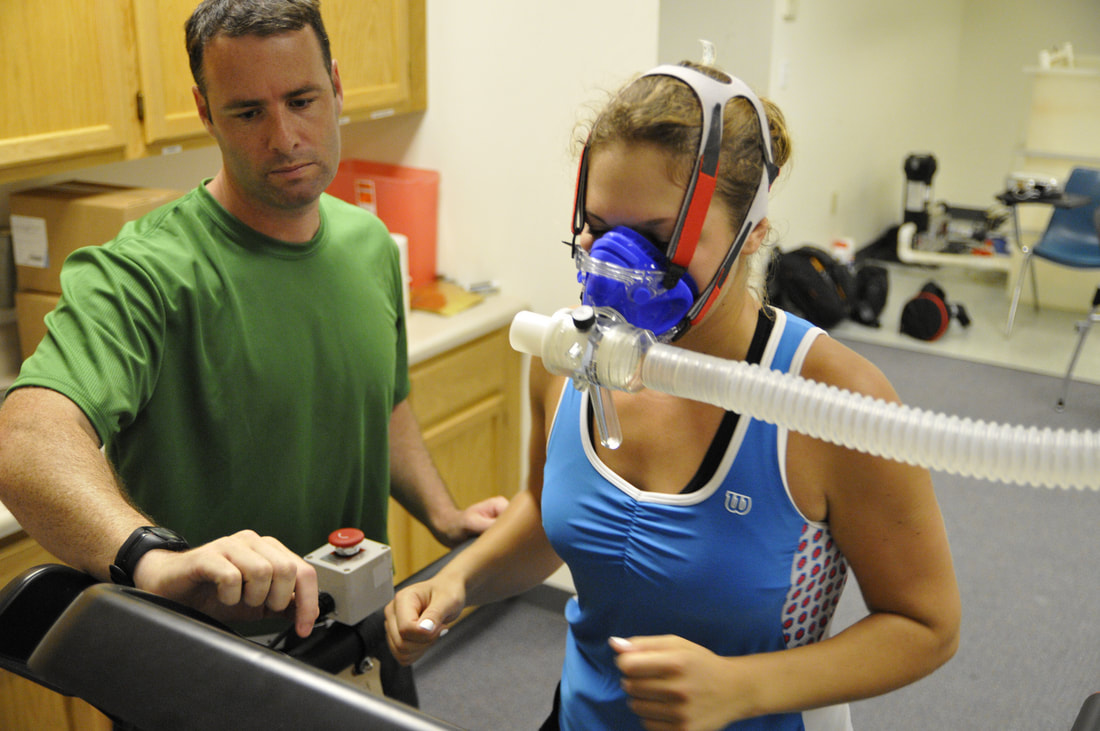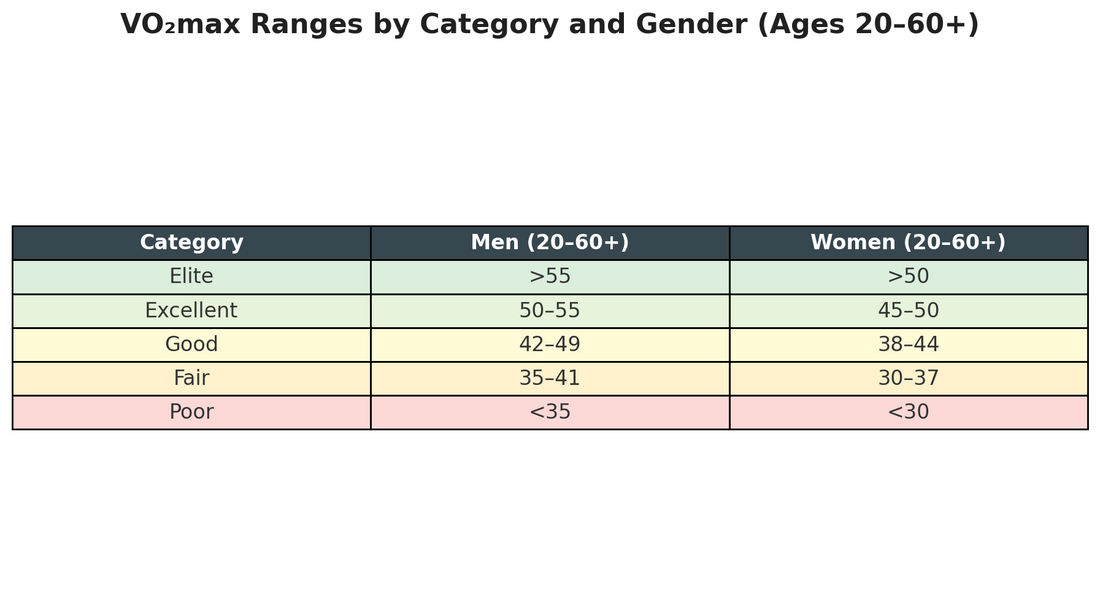|
By Dr. Mark Kovacs, PhD, FACSM www.mark-kovacs.com When we talk about living longer, and better, we often focus on the obvious: nutrition, strength, mental health, sleep, recovery. All critically important. But there’s one metric that stands out as a powerful, objective predictor of how long and how well you’ll live. It’s called VO₂max. The value of this test can be life changing. Take it from someone who has run more than 1,000 VO2max tests over my career on Olympic Champions to individuals in their 80s. Your VO₂max isn’t just a number reserved for elite athletes. It’s arguably the most important—and underappreciated—physiological marker for durability, healthspan, and longevity. Recent research has made one thing clear: maintaining or improving VO₂max could add years to your life. Not just more time; but more quality time. Let’s break down what VO₂max really is, why it matters, and how you can use it to live younger, longer. What Is VO₂max? VO₂max stands for “maximal oxygen consumption.” It refers to the maximum amount of oxygen your body can take in, transport, and utilize during intense physical activity. Measured in milliliters of oxygen per kilogram of body weight per minute (ml/kg/min), it reflects the efficiency of your heart, lungs, blood vessels, and muscles to work in coordination under stress. In plain terms: It’s your body’s aerobic engine. The higher your VO₂max, the more efficiently you deliver oxygen to your cells—and the more durable your entire system becomes. Why VO₂max Is So Critical for Longevity A growing body of research has shown that VO₂max isn’t just a performance metric—it’s one of the most powerful predictors of how long you’ll live. A widely referenced study by Laukkanen et al. (2022) titled “VO₂max—A Poorly Understood but Possibly Most Important Predictor of Longevity and Health” underscores the fact that even modest improvements in VO₂max are associated with dramatic reductions in all-cause mortality. Here’s what the data tells us:
VO₂max, Cardiovascular Health, and Telomere Preservation A 2023 systematic review and meta-analysis published in the Journal of Clinical Endocrinology & Metabolism further supports VO₂max as a core biological marker of healthy aging. It revealed a strong association between aerobic fitness and longer telomeres—the protective end caps of DNA that degrade with age. “Individuals with higher cardiorespiratory fitness exhibited significantly longer telomere length and reduced markers of cellular aging.” — Wang et al., 2023, Journal of Clinical Endocrinology & Metabolism Telomeres are widely recognized as markers of your biological clock. Longer telomeres are linked to reduced disease risk, better immune function, and delayed onset of age-related decline. So when we talk about improving VO₂max, we’re not just enhancing heart and lung function—we’re influencing your cellular rate of aging. Reference: Wang et al., 2023 – Aerobic fitness and telomere maintenance What Is a Good VO₂max? And How Do You Measure It? The average VO₂max in adults declines by 10% per decade after age 30—unless you actively train to preserve or improve it. The good news it is simple to train, but may not be that easy for most people. General VO₂max Guidelines (ml/kg/min) VO₂max can be tested through:
Why VO₂max Declines With Age—and What You Can Do About It The decline in VO₂max with aging is mostly due to:
And the earlier, and more consistently, you train it, the more protection you build against aging. How to Improve VO₂max: Protocols That Work You don’t need to be a marathoner to improve your VO₂max. But you do need to apply intensity and progression in a structured way. Here are evidence-backed protocols that help boost VO₂max: 1. Zone 2 Training (Base Building)
2. VO₂max Intervals (High-Intensity Aerobic Work)
3. Sprint Intervals (Anaerobic Aerobic Hybrid)
VO₂max vs. Strength: Which Matters More? This is not an either-or debate. Both matter. "Cardiorespiratory fitness is a modifiable indicator of long-term mortality, and there is no upper limit of benefit.” — JAMA Network Open, 2018 That said, strength and muscle mass become critical in the second half of life. Sarcopenia (age-related muscle loss) is real—and deadly. But VO₂max supports vascular health, metabolic function, and cellular oxygenation in ways strength alone cannot. For optimal durability, train both. The VO₂max Mindset: You Can’t Manage What You Don’t Measure Longevity isn’t passive. It’s a performance strategy. VO₂max should be:
The Bottom Line VO₂max is one of the clearest, most actionable indicators of how well—and how long—you’re likely to live. It’s a reflection of your heart, your lungs, your muscles, your mitochondria, and your mindset. It’s also one of the most modifiable factors within your control. In as little as a few weeks you can significantly improve your VO₂max. So whether you're a competitive athlete, a busy executive, or simply someone who wants to live with more energy, resilience, and health—start measuring and training your VO₂max now. Because the stronger your aerobic engine, the longer your runway for life.
0 Comments
|
AuthorDr. Mark Kovacs, PhD, FACSM is a globally recognized expert in human performance, longevity, healthspan, and sports science. A former professional athlete turned performance physiologist, Dr. Kovacs has trained world champions, Fortune 100 executives, and Olympic medalists. Dr. Kovacs has held some of the top roles with iconic brands across longevity, health, medical, wellness and sports. These include as VP of Health & Performance at Canyon Ranch (the largest resort wellness and healthcare company in the US), an executive at Pepsico/Gatorade, the head of Sport Science & Health in the NBA with the Cleveland Cavaliers and the United States Tennis Association (USTA). As a result he has been at the forefront of longevity and healthspan innovation for over two decades. He is a leading voice in longevity science, he bridges elite athletics with cutting-edge health optimization—helping high performers live younger, longer, and stronger. ArchivesCategories
All
|
|
© Mark Kovacs. All rights reserved. |



 RSS Feed
RSS Feed